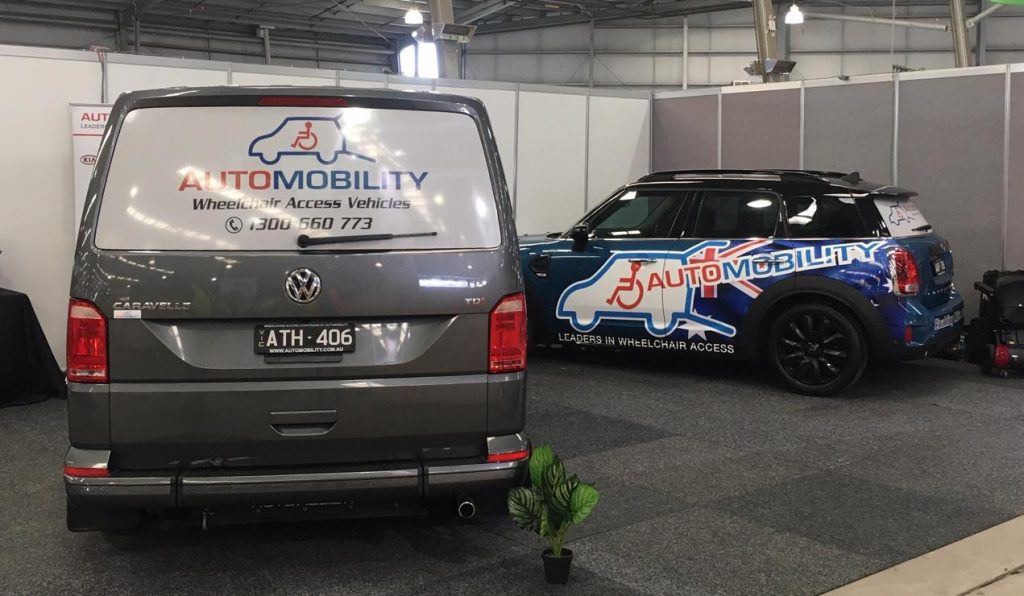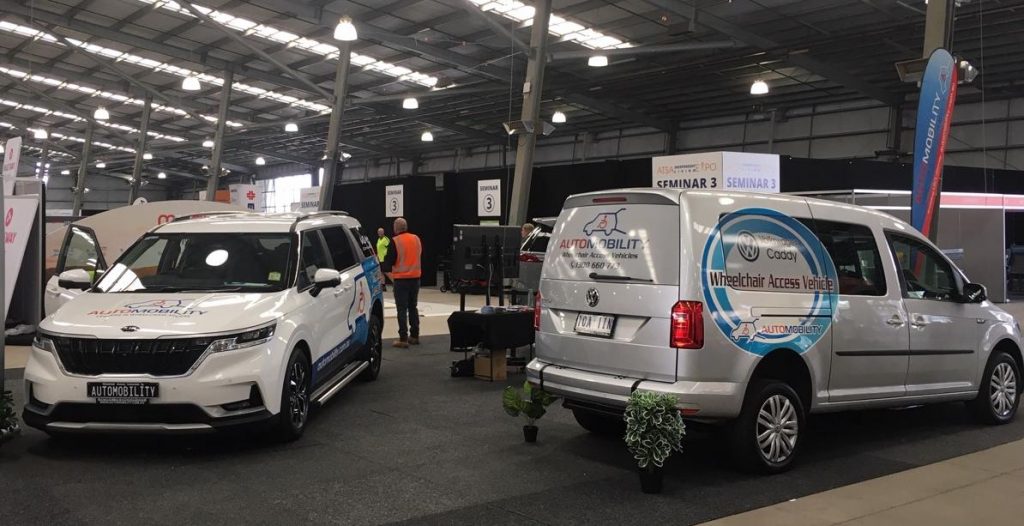Tips For Buying Wheelchair Accessible Vehicles
A Wheelchair Accessible Vehicle (WAV) provides life-changing opportunities, conveniences and benefits including greater freedom and improved quality of life. It can also be a significant investment and long-term commitment. With so many options available, it can be hard to know where to begin.
In this blog we look at some of the most important things to consider and provide tips to help choose the right WAV for you!

What to Consider When Buying a Wheelchair-Accessible Vehicle?
At Automobility, we’re all about identifying each individual’s needs and providing a long-term solution. From vehicle access to seating position, storage options to safety restraints, we aim to create a vehicle that will support and enhance your unique lifestyle. While this means there is no “one-size-fits-all” solution there are still some common things that should be considered by all of our clients.
Before you read on, make sure you have answered these three essential questions:
1. How often will you be using your WAV and where will you typically be travelling to?
2. What are the dimensions and weight of your wheelchair, and do you need to transport any other equipment?
3. Who will be driving, and how many other passengers will be regularly using the WAV?
Top 5 things to think about when looking to buy or convert a wheelchair accessible vehicle:
1. Second-hand or New
Purchasing a second-hand WAV may seem like an affordable and easy option but the conversion features included with some of these vehicles may not necessarily suit your particular circumstances. Always test drive the vehicle and even try a few common trips that you will frequently take, such as a visit to the supermarket, GP and your local park or beach. It will quickly become apparent which features and options you will need.
2. Safety
Not all WAVs are created equal when it comes to quality and safety! Make sure your wheelchair converted car or van meets Australian Safety Standards and has undergone extensive engineering and driving tests. One thing to ask is whether the vehicle was manufactured locally as overseas conversions may not always comply with local regulations and safety requirements. Read more about our thorough and stringent testing process.
3. Parking
While there’s plenty of disabled parking around some spots can be trickier to access than others, for example poles and columns can block a side entry vehicle and parked cars may block a rear entry WAV. Check out some of the common parking spots you’ll be using, including your garage, carport, driveaway and street to work out your best WAV entry point and make sure your conversion features will be practical.
4. Ramps
Choosing a manual or electric ramp will depend on your specific vehicle and whether the driver or carer will be able to operate it. Wheelchair ramps can be installed in two locations – at the rear or side of the vehicle. Read this recent blog which talks more about Side vs Rear Entry options for more information about which one is right for you. Wheelchair lifts are also available for heavier or larger wheelchairs.
5. Seat Position
Where would you like to sit? Would you like to sit up front with the driver and watch all the action, or sit back and relax in a row 2 or 3 wheelchair position? Your wheelchair position is a personal choice, but we have found that active adults prefer to be up front, while younger children or an ageing parent will feel just as happy and safe in the back. Read this blog for more information about each wheelchair position.

Choosing the Right Accessible Van for you
1. Which Car Brand Should You Choose?
Converting a vehicle to become wheelchair accessible requires months of research, development and testing to be done right and safely. That’s why we choose to offer a select range of vehicles in which we have total confidence – these include the new 2021 model Kia Carnival, plus the VW Caddy, VW Caravelle, VW Transporter and VW Multivan.
The difference between these vehicles may appear small but there are several reasons why you might choose a Kia over a VW conversion including the overall look and feel, initial and ongoing costs, fuel options (i.e., diesel), vehicle features and wheelchair configuration requirements.
Vehicles from other WAV manufacturers include brands like Toyota, Chrysler, Mercedes and Renault and while we do not offer these, we have extensive experience and understanding of each vehicle and can help you understand the pros and cons of each. One important thing to check is that they vehicle has been converted locally and not overseas.
2. Type of Wheelchair Van
Larger vehicles such as mini-vans and people movers are better suited for transporting wheelchairs primarily due to their spaciousness, size and storage capacity, along with handy rear and side access points. While we have offered smaller vehicles in the past (the Proton Exora) our current offering is focussed on these larger family friendly vehicles.
Even if you’re looking for a smaller vehicle or had another car brand or type in mind, give us call for a chat – we’ll be able to provide you with valuable advice and insights, and maybe even change your mind. We’re always looking into new car models and makes too…
3. Cost of your Wheelchair Van
The cost of your Wheelchair Van can vary depending on a range of factors. First, you need a clear understanding of which features you will require for your lifestyle and circumstances. Second, it’s not just the cost of purchasing and/or converting the vehicle you need to consider but things like insurance, day-to-day running costs and regular maintenance too.
We can assist you with determining what kind of vehicle and conversion would be most suitable, to help you prepare a realistic budget, but you might also like to contact your insurance provider and trusted mechanic for a complete understanding of your total investment and ongoing costs too. It’s important to remember that you get what you pay for, so beware of heavily discounted or bargain conversations!
You may also be eligible for NDIS funding to assist with the conversion of your new and existing car; if it meets the set criteria. We recommend speaking with your Occupational Therapist (OT) or carer and reading our NDIS FAQ page here for more information.
In Conclusion
Whether it’s time to upgrade your current vehicle or you want to finally say goodbye to pre-booking taxis, struggling with public transport or breaking your back trying to transfer from wheelchair to car – deciding to purchase or convert a WAV means a lot more than just a shiny new set of wheels.
At Automobility, we aim to help you take back control and make the most of everyday, as well as embrace new possibilities and experiences.
Say hello to private transport that is convenient, comfortable and safe!
Call us on 1300 660 773 to speak with your local Automobility Consultant and arrange an obligation free demonstration and consultation today.
